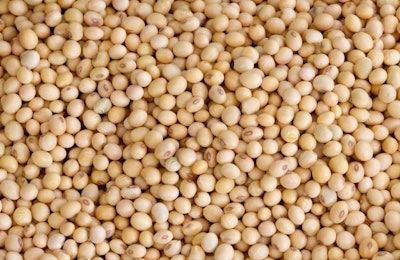
If ever there was a time for the bulls to throw in the towel, surely the soybean meal market this spring 2017 is the time to do it. The South Americans are in the middle of harvest of their largest crop on record. The U.S. Department of Agriculture (USDA) just released planting estimates that suggest huge soybean acreage in the U.S. will be planted very soon. What are we going to do with all these soybeans?
Being a little bit of a contrarian, this analyst thought it might be good to check history to see what happened in similar years. The chart looks at two variables as they impact prices for December soybean meal during April-June:
- The first is South American soybean production versus the ever-increasing trend for more soybean from that source. The nuance of “versus trend” attempts to consider output versus expectations. The year 2017 will be the fifth-largest crop versus trend since 1996 for the soybean output from Brazil and Argentina combined.
- The second is expansion of the U.S. acreage base planted to soybeans. Years that had a greater than 3-million-acre increase are highlighted in orange. This year, a 6.1 million-acre increase is expected.
The chart is the range December soybean meal traded during April-June as a percentage of the March low. That percentage is applied to the 2017 March low of $311.1 to index the prior years to 2017. The current market for December meal near $310 is shown as the red dotted line.

The current market for December meal near $310 is shown as the red dotted line.
Impact for soybean meal buyers
It is clear from the graph that the market has much more upside than downside during April-June from the current level regardless of the fundamental situation. That’s clear because the bars are mostly above the red dotted line.
The fact that South America has a big crop does put pressure on the market in the extreme, but this year is not extreme.
Large planted acreage does not provide any bias for the market to be weak during the second quarter (orange bars not lower than the others).
With many soybean meal buyers and traders suggesting there can’t be much upside, a check of history suggests otherwise. It is good to check the data before making such assessments. With weather conditions in the summer always uncertain, this analyst is not expecting a big break during Q2. In fact, current prices are near the expected lows for the next 90 days.
If you are bearish on soybean meal, you are betting against history.
















